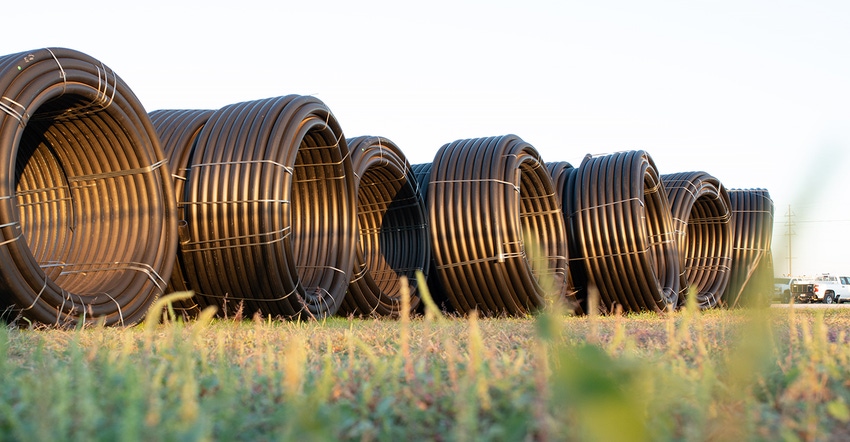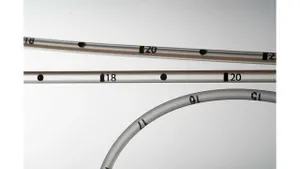US and EU Plastic Pipe Extruders Reinforce Messaging on Sustainability, Infrastructure Improvement
Strong, durable, lightweight, and safe, plastic pipes require significantly less energy to manufacture, transport, and install than metal or concrete alternatives, stressed the Plastics Pipe Institute.
December 10, 2021

Associations representing plastic pipe manufacturers in the United States and Europe are stepping up their messaging on the sustainability of plastic pipes and their potential contribution to infrastructure improvement projects.
The Plastics Pipe Institute Inc. (PPI) issued a statement this week in support of the trillion-dollar Infrastructure Investment and Jobs Act (IIJA). “With the landmark [legislation] now signed into law, our nation will soon see a concentration of forces at work to revitalize and expand our existing infrastructure,” said David M. Fink, President of the Plastics Pipe Institute, which represents the North American plastic pipe industry. “The Plastics Pipe Institute heartily endorses this great investment in our country’s water, natural gas, broadband, energy, highways, and airports, plus other areas of critical infrastructure.”
|
David Fink, President, Plastics Pipe Institute |
Fink noted that the proper design and use of stormwater conveyance is a critical environmental concern, and that all construction projects now need to meet EPA and local environmental protection requirements, which includes stormwater detention, retention, and treatment. Corrugated thermoplastic pipe is a practical choice for these applications, and it can contain a high percentage of post-consumer recycled resin, he stressed. For example, a standard 20-foot length of 48-inch diameter high-density polyethylene (HDPE) pipe might remove between 1,600 and 2,200 bottles from landfill.
“Aging government buildings such as schools, courthouses, and post offices contain original piping systems that have reached the end of their useful life and need to be replaced,” added Fink. “Plastic pressure pipe materials provide modern solutions to upgrade plumbing and mechanical systems, work that will be funded by the IIJA and will increase building efficiency.
Expanding access to clean drinking water
Other infrastructure projects where plastic pipes can play a substantial role is in expanding access to clean drinking water, for which $55 billion has been earmarked, and deploying broadband infrastructure in underserved communities. Many communities will benefit from new HDPE water mains and HDPE or PEX water service lines, because these materials are reliable, safe, efficient to install, and provide zero leakage to make sure no water is wasted, said Fink, adding that PPI’s Municipal & Industrial Division is ready to support growing implementation of these materials. More than $42 billion has been set aside in the IIJA to expand fiber-optic-cable-based broadband, and the PPI’s Power & Communications Division can provide helpful information on how to design and install reliable broadband systems using PE conduit.
The bill also appropriates $7.5 billion in part to support a hydrogen and natural gas fueling infrastructure, and the the PPI’s Energy Piping Systems Division continues its work on developing design specifications and standards for the polyethylene, polyamide, and composite pipes used with these emerging fuels, added Fink.
“In short, plastic piping systems provide sustainable and environmentally responsible choices that will serve generations to come and are a perfect fit for the wide range of projects being funded in the Infrastructure Investment and Jobs Act. Strong, durable, lightweight, and safe, these piping systems require significantly less energy to manufacture, transport, and install than metal or concrete alternatives. With superior resistance to corrosion and abrasion, plastic piping systems also supply long service life, excellent joint performance, and offer leak-free protection — all adding up to exceptional value, which is especially important to meet the goals of the Infrastructure Investment and Jobs Act,” said Fink.
EU association committed to circular economy
In its statement, Brussels-based TEPPFA stressed the contribution that Europe’s plastic pipe system manufacturers, which it represents, make to the circular economy. It has adapted its mission statement and strategy to reinforce its commitment to “meet the latest macro-economic needs,” it said this week.
Noting that “plastic pipe systems are generally recognized as a durable, sustainable, and high-performing solution for critical infrastructure and essential services to society,” TEPPFA has articulated three “must-win battles,” as follows:
Contribution to the circular economy
Sustainability benefits in end-use applications and manufacturing
High-quality, durable solutions
"For 30 years our members have been working relentlessly on standardization, technically improving water-management solutions and lowering the environmental footprint of plastic pipes in Europe,” said Ludo Debever, TEPPFA General Manager. “The new vision, must-win battles, and ambitions give us a clear focus. Our members embark on the next journey toward climate neutrality and delivering a substantial contribution to seven of the 15 United Nations Sustainable Development Goals.”
TEPPFA member companies have designed durable and sustainable infrastructure and building solutions for several decades, noted the association. Its experts have contributed to more than 200 standards, supported by test and research projects to substantiate fitness for purpose, 100+ years’ longevity, and quality. This activity has resulted in plastic pipes becoming the material of choice for most building and infrastructure applications, added TEPPFA in its statement.
About the Author(s)
You May Also Like





